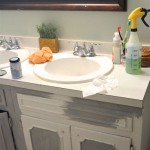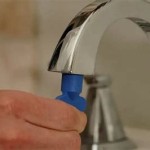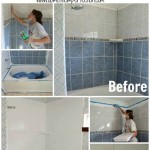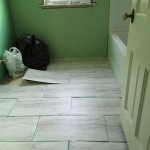How to Replace a Recessed Bathroom Medicine Cabinet
Replacing a recessed bathroom medicine cabinet can seem like a daunting task, but with the right tools and a bit of patience, it's a DIY project well within the reach of most homeowners. Recessed cabinets are integrated into the wall, making them more permanent fixtures than surface-mounted cabinets, but their replacement requires careful planning and execution. This guide will outline the steps involved in successfully replacing a recessed bathroom medicine cabinet.
1. Preparation and Planning
The first step is to carefully assess the situation and gather the necessary materials. Begin by removing any items from the existing cabinet. Take note of the cabinet's dimensions, including its width, height, and depth. Measure the wall opening to ensure the new cabinet will fit properly. It's also crucial to determine the location of any electrical wiring or plumbing within the wall, as these will need to be avoided during the removal process.
Next, gather the tools you'll need. This includes a screwdriver (both Phillips and flathead), a level, a tape measure, a stud finder, a utility knife, a hammer, safety glasses, work gloves, and a dust mask for protecting yourself from potential debris. You may also need a jigsaw, depending on the cabinet's size and shape.
After assessing the situation and gathering your tools, carefully choose your new medicine cabinet. Ensure you select one that is compatible with your existing wiring and plumbing. There are several options available, including cabinets with mirrors, integrated lighting, and even built-in electrical outlets.
2. Removing the Old Medicine Cabinet
With everything in place, you can begin the removal process. First, remove the cabinet door and any shelves to make the cabinet lighter and easier to handle. Next, locate the screws holding the cabinet to the wall. These are often hidden behind trim pieces or the cabinet door frame. Carefully remove these screws, being mindful of any electrical wiring or plumbing that might be in the way.
Once all the screws are removed, gently pull the cabinet away from the wall. Be careful not to damage the surrounding drywall or trim. If the cabinet is stuck, use a putty knife or a flathead screwdriver to gently pry it loose. If you encounter any resistance, stop and investigate the issue to avoid causing further damage.
After removing the cabinet, take a close look at the wall opening. If there is any damage to the drywall, you'll need to repair it before installing the new cabinet. This may require patching the drywall, sanding, and painting.
3. Installing the New Medicine Cabinet
With the old cabinet removed and the wall prepped, you can start installing the new one. Begin by positioning the new cabinet in the opening, ensuring it's level and centered. Some cabinets may come with a template for accurate placement. If your cabinet doesn't include a template, create one yourself using cardboard or a similar material. Use a pencil to trace the outline of the new cabinet onto the wall. Use a level to ensure the outline is straight and even.
Next, locate the studs within the wall using a stud finder. Mark the stud locations on the wall to ensure that you will be attaching to the cabinet to solid structural supports. Use the template to drill pilot holes for the screws. Install the screws through the cabinet frame into the studs. Be sure to use screws that are long enough to penetrate the wall properly, but not so long that they protrude through the back of the cabinet.
After securing the cabinet to the wall, re-install the shelves and doors. If the cabinet has any integrated lighting or electrical outlets, connect these according to the manufacturer's instructions. Finally, connect the power to the new cabinet and test everything to ensure it is working correctly.
Remember that safety should be a priority throughout the entire process. Wear safety glasses and gloves to protect yourself from potential injury, use caution when handling power tools, and be aware of any electrical wiring or plumbing within the wall.
While replacing a recessed bathroom medicine cabinet can be a challenging project, it is a rewarding accomplishment for the DIY enthusiast. With proper planning, careful execution, and a little bit of patience, you can successfully upgrade your bathroom with a new, functional, and stylish medicine cabinet.

Creating Home From Chaos To Calm The Art Of Cultivating Peace And Joy Decor Door

Diy Niche Shelf Old Bathroom Medicine Cabinet Makeover A Piece Of Rainbow

How To Install A Medicine Cabinet The Home Depot
How To Make And Install A Medicine Cabinet Queen Bee Of Honey Dos

7 Steps To Installing A Recessed Medicine Cabinet

How To Remove A Medicine Cabinet Kay S Place

Diy Niche Shelf Old Bathroom Medicine Cabinet Makeover A Piece Of Rainbow

7 Steps To Installing A Recessed Medicine Cabinet

Medicine Cabinets Ideas 7 Diy Updates Bob Vila

Medicine Cabinets Ideas 7 Diy Updates Bob Vila
Related Posts







